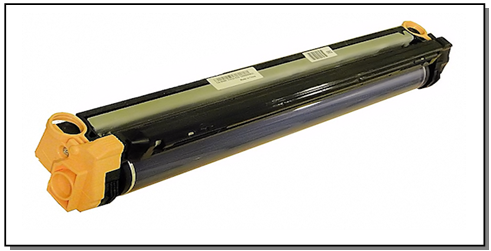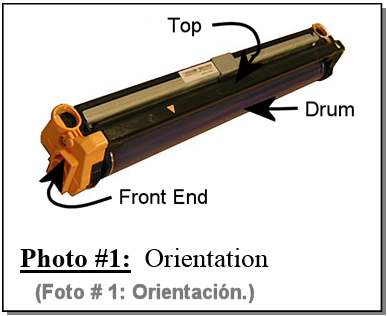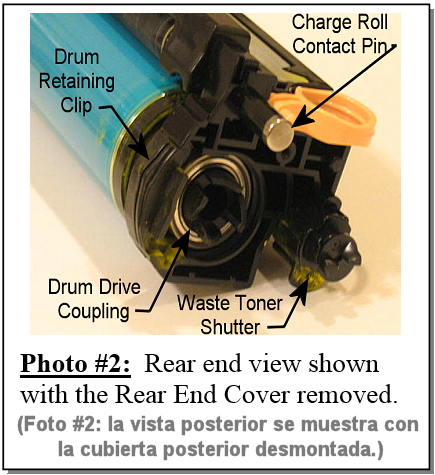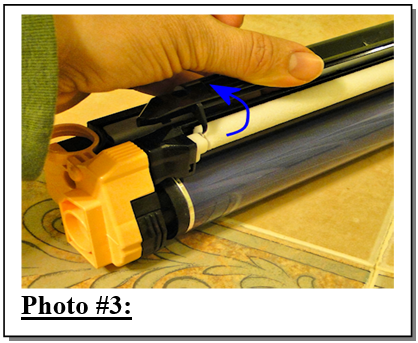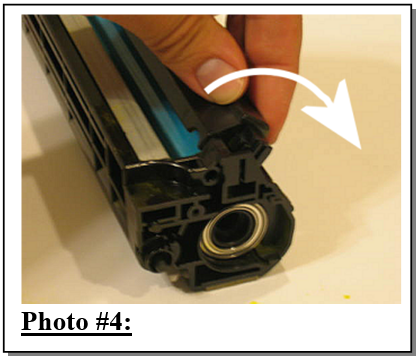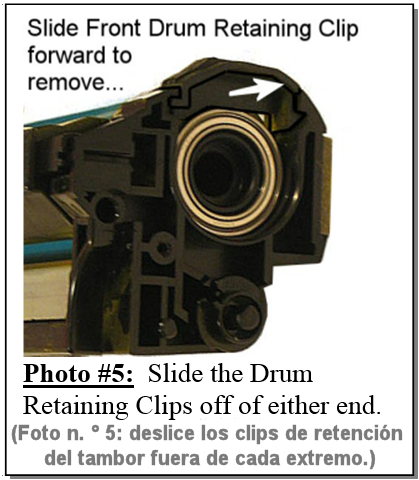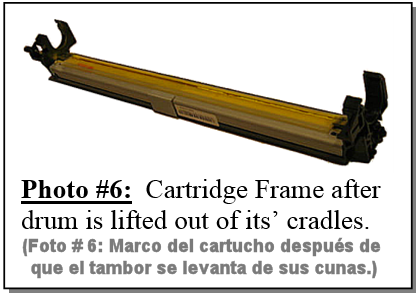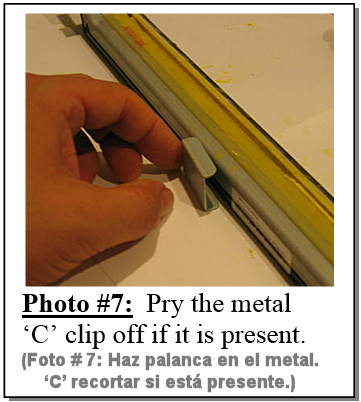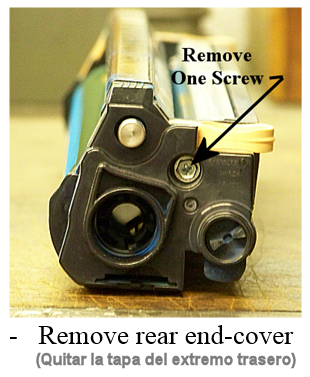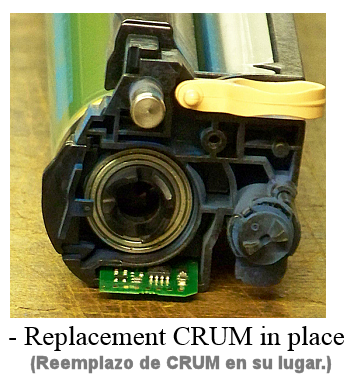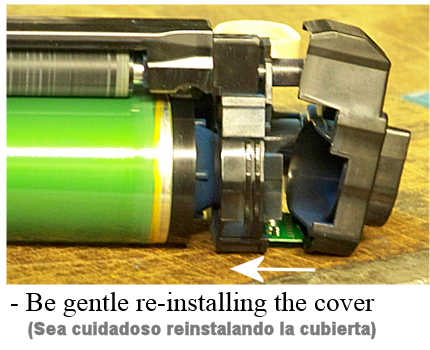Important: The information presented here is for the use of a qualified, experienced technician. Without the background knowledge which comes with training, you risk doing more damage then good to the copier & also risk your own safety. If you are not willing to take 100% responsibility for your actions, do not use the information posted here. Thank you. Read our conditions of Use for more information.
DC250 style - Color Drum Cartridge Rebuild
| Technical Specifications |
|---|
DC250 style For Xerox® models: (DocuColor) DC-240, 242, 250, 252, 260 (WorkCentre) WC-7655, 7665, 7675, 7755, 7765, 7775 & Xerox® Color 550, 560, 570, C60, C70, (Digital Color Press) DCP700, DCP700i, DCP770, C75, J75
The highly popular Xerox DC250 style has proliferated into a whole range of models, each with their own versions of the color drum cartridges. It is high time we re-visit this type of drum cartridge and bring all of these new models into the fold. We’ll get into the differences, talk about “best practices” and revisit the rebuilding instructions.
Here are the many cartridge reorder numbers and their respective models:
13R603 / 013R00603 – For (Docucolor) DC-240,250,242,252,260, (WorkCentre) 7655, 7665, 7675, 7755, 7765, 7775
13R656 / 013R00656 – For (Digital Color Press) DCP 700
13R664 / 013R00664 – For Xerox Color 550, 560
13R648 / 013R00648 – For (DocuColor) DC-5000
13R672 / 013R00672 - For Xerox Color C75, J75 Press
Many folks have found that you can maximize the yield by cleaning up the cartridge, and replacing the CRUM chip and charge roll after the first cycle… In most cases this will nearly double the cartridge’s initial yield. Then when the drum is actually worn out, you can do a full rebuild. Good aftermarket parts (Drums, Blades, Charge Rolls (PCR) and CRUM Chips, as well as PCR Foam Cleaning Rolls) are all available. Or you can pick-up a Cartridge Rebuild Kit which includes all of those parts. Go green! It makes for good common sense to maximize the yields on these cartridges rather than letting them go to a landfill too early.
The best success stories surrounding rebuilding these drum cartridges, tell of setting up a workbench where one or two techs in a dealership can rebuild cartridges for the company This allows the technicians to deliver the cartridges as ready-to go units. It simply makes the tech look good… they don’t have to make a big awkward mess at the customer’s location, complete with vacuum cleaner blaring. Having a few hand-picked techs doing these all the time makes them experts at the process. Most of them do cartridges for a few hours and then hit the field to answer their usual calls. It also proves to be far more efficient to work in a facility. A clear workspace with all of the necessary tools handy is priceless. Odd spare parts and extra used cartridge cores are within easy grasp if something unusual needs replacing. When setting up a workbench, it is important to have a machine nearby to test cartridges before they go out to the field. This allows the techs to catch any mistakes and to solve potential problems without inconveniencing your customers.
Now let’s see what makes the many versions of the cartridges different from one another. The primary difference which makes each cartridge version unique is the CRUM chips which are found inside the rear end cover of each cartridge. The Drum Count is kept on the drum cartridge by this RF Connector CRUM (radio frequency, Customer Replaceable Unit Monitor). Replacing that CRUM will reset the drum count. Each cartridge version has its own version of the CRUM chip, so make sure you order the correct one for the machine you’re working on:
DC250CNC (for DC250 version 13R603 Ctgs),
DC700CNC (for DCP 700 version 13R565),
550CNC (for 550 version 13R664),
5000CNC (for DC5000 version 13R649),
J75CNC (for C75 / J75 version 13R672).
There is one other difference which sets the original DC250 version (13R603) apart from all of the newcomers. All of the new versions are shaped slightly differently in that they have an additional piece on top. Instead of using a stationary brush to clean the charge roll as was found in the DC250 version, a Cleaning Roll has been added to the newer designs. This turns out to be a substantial improvement as it helps the charge roll last a lot longer. Fortunately, the Drum, Blade, and Charge Roll are interchangeable among all of the versions.
PROCEDURE:
1. Remove the Rear End Cover (1 phillips head screw (see photo 2). The RF Connector CRUM sits in this cover. You’ll need to replace it to reset the drum count (see below for details). The rear finger pull comes right off as does the Charge Roll Conact Pin.
5. Remove the Drum as follows: Turn the cartridge on its left side so that the drum is presented upwards. Slide the Front Drum Retaining Clip forward and off (see Photo #5) and the Rear Drum Retaining Clip towards the rear and off. Now the drum with its two bearings can be lifted up and out of its cradles. This drum is very similar in design to the one on the Black Drum Cartridge but the diameter is considerably smaller.
- See the next page for Important Precautions –
Color Drum Rebuild Kits…
links to the kits on our website (www.partsdrop.com):
DC250CRK – for: 13R603 / 013R00603 – DC-240,250,242,252,260, WC-7655,7665,7675, 7755,7765,7775
DC700CRK – for: 13R656 / 013R00656 – For (Digital Color Press) DCP 700
550CRK – for: 13R664 / 013R00664 – For Xerox Color 550, 560
5000CRK – for: 13R648 / 013R00648 – For (DocuColor) DC-5000
J75CRK – for: 13R672 / 013R00672 - For Xerox Color C75, J75 Press
IMPORTANT PRECAUTIONS:
- For DC250 version (13R603 / 013R00603) it is absolutely critical that the Charge Roll Cleaning Brush is in good condition, and that it is totally clean… This brush like material strip is adhered on the inside of the cover above the Charge Roller. When the machine goes into a “Cleaning Cycle” (every 2k pages or so), it has fingers above the drum ctg which press down on the charge roll’s top cover mashing the cleaning brush against the Charge Roll to clean it. Grit or debris on this brush will cause the Charge Roll to wear out very rapidly in places where the defect or grit touch the charge roll’s surface. This is definitely the most common cause of failure on these drum cartridges. The other cartridge versions besides the DC250 version, do not have this problem because they added a Charge Roll Cleaning Roller in the place of the Cleaning Brush idea…this is a soft white foam roll which constantly rotates with the charge roll to clean it off. The newer design is far superior to the older way.
Note that some folks are telling us that removing the Cleaning Pad from the 13R603 completely actually adds to the lifespan of this particular cartridge. That needs a bit more investigation to confirm if it is helpful to adding longevity to the rebuilt or new cartridges.
- Never use the Toner from the Toner Cartridge, nor from the Toner Waste Container as starting powder. This is because in this series of machines, this toner will have a small percentage of Developer material mixed right in with the toner… and the gritty developer will cause damage do the drum and charge roll if it gets in there. It is safe to use the toner from behind the Drum Cleaning Blade for starting powder because that toner is just pure reclaimed toner with no developer material in it.
- Replacing the Drum Reset CRUMs without damaging them: The original CRUM can slide out of its slot but the new replacement CRUMs will not fit in the same way (they have larger components)… so it is necessary to remove the rear end-cover from the cartridge to replace the CRUM. See the photos below. Be very gentle with the replacement CRUM to avoid damaging the components. The replacement CRUM should be positioned as shown in the 3rd photo.
|
| Information Reference |
Author: Britt Horvat, with special thanks to Kurt for his expertise and thanks also for support from whole Partsdrop gang. Originally published as an Article in the marvelous ENX Magazine - www.enxmag.com :) All rights reserved... you can distribute copies as long as you include a link to the source website: www.partsdrop.com |

